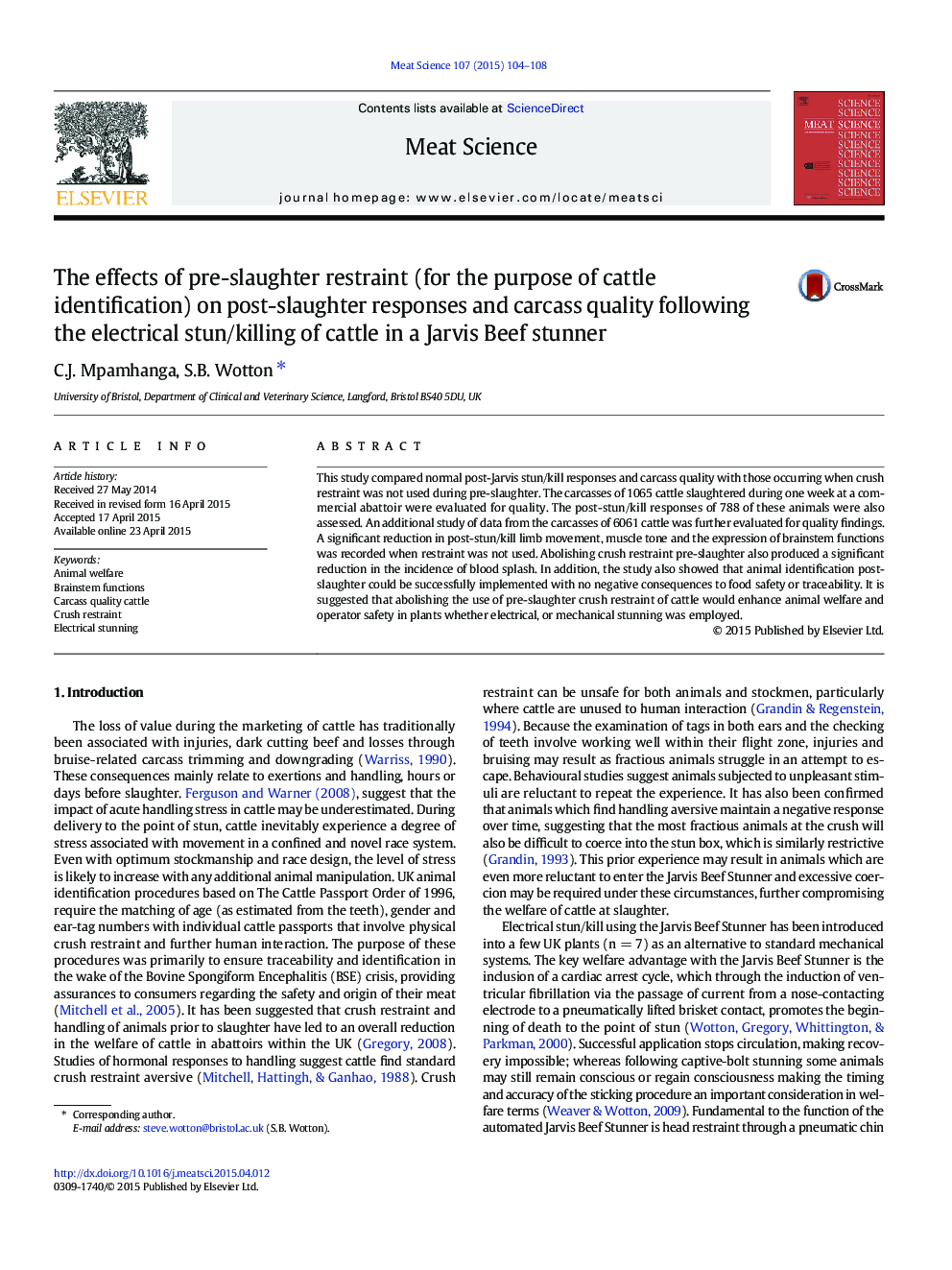| Article ID | Journal | Published Year | Pages | File Type |
|---|---|---|---|---|
| 2449845 | Meat Science | 2015 | 5 Pages |
•Pre-slaughter restraint for identification purposes adversely affects cattle welfare.•Post-Jarvis Beef Stun movement was reduced when restraint was not used.•Blood splash was also reduced when restraint was not used.•We suggest that animal identification should take place during post-mortem.
This study compared normal post-Jarvis stun/kill responses and carcass quality with those occurring when crush restraint was not used during pre-slaughter. The carcasses of 1065 cattle slaughtered during one week at a commercial abattoir were evaluated for quality. The post-stun/kill responses of 788 of these animals were also assessed. An additional study of data from the carcasses of 6061 cattle was further evaluated for quality findings. A significant reduction in post-stun/kill limb movement, muscle tone and the expression of brainstem functions was recorded when restraint was not used. Abolishing crush restraint pre-slaughter also produced a significant reduction in the incidence of blood splash. In addition, the study also showed that animal identification post-slaughter could be successfully implemented with no negative consequences to food safety or traceability. It is suggested that abolishing the use of pre-slaughter crush restraint of cattle would enhance animal welfare and operator safety in plants whether electrical, or mechanical stunning was employed.
